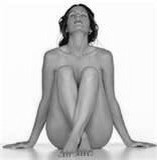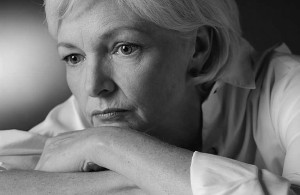menopause
What is menopause
Natural menopause occurs when the ovaries stop producing oestrogen, and finish releasing eggs that may be fertilised by sperm to result in pregnancy. The change in hormone levels means the uterus (womb) no longer prepares itself for pregnancy each month, which is why periods no longer occur.
Menopause is something that is going to affect all women once they reach the age of around 50 and, not surprisingly, it will affect their partners as well.The first thing to say about menopause – and this is extremely important – is that it is not a disease or an illness or something you can catch.
Menopause is a part of life. For most it is a release from the monthly grind of dealing with periods. It is different for every woman.
Sometimes the transitional time is really physically and emotionally difficult and for others it is an easy transition. There have been many books, blogs, research papers about this vast subject and its affect on women…I hope I can answer some of the questions you may be asking about your experience and why you should seek my help with your pelvic and general fitness health.
Firstly let’s look at some of the things you may need to know about and a trip to your GP to discuss your symptoms is the first step.
What symptoms might I expect
Symptoms of menopause will begin when a woman’s oestrogen levels start changing.
| Physical symptoms | Emotional symptoms |
|
|

Mood swings
Memory fogginess
Problems with sex
Vaginal dryness
Low libido
Worsening PMS
Irregular periods
Depression, sadness or anxiety
Sudden or frequent urinating
Higher risk for bone loss and fractures
Higher risk of heart disease
The symptoms of menopause occur due to the changing hormones the woman experiences. As the hormone levels begin to stabilize, and oestrogen levels stay consistently low, many symptoms will decrease, and many will disappear altogether. Some, such as a higher risk of heart disease or bone loss, remain a constant through middle age and beyond, as a woman’s body adjusts to her new hormone levels. Understanding these symptoms will help you choose the right treatment options as you navigate the changes menopause brings.
What treatments are available
The Jean Hailes Foundation website has a great selection of webinars on menopause
The Australian menopause Society has an amazing amount of information sheets freely available
Medical treatments include:
- hormone replacement therapy (HRT) combined HRT Testosterone
- tibolone (similar to HRT)
- clonidine

- vaginal lubricants
- antidepressants
- bio identical hormones
- self help interventions
- exercise
- diet
- complementary medicines (Natural therapies)
- acupuncture
- traditional Chinese medicine
- remedial massage
- calcium supplements
- non hormonal medicines
- Local oestrogen therapy A Cochrane review report found….” 34 trials including more than 19,000 women of whom over 9000 received oestrogen. The review found that significantly more women who received local (vaginal) oestrogen for incontinence reported that their symptoms improved compared to placebo. (including frequency, urgency and discomfort) There was no evidence about whether the benefits of local oestrogen continue after stopping treatment but this seems unlikely as women would revert to having naturally low oestrogen levels”
Medication information /doses
Sex after menopause
My virtual medical centre is a website resource for up to date information on medical issues
Body changes after menopause
What is a Hysterectomy
A hysterectomy is a surgical procedure to remove the womb (uterus). You will no longer be able to get pregnant after the operation.
If you haven’t already gone through the menopause, you will also no longer have periods, regardless of your age. The menopause is when a woman’s monthly periods stop, usually at around the age of 52. A hysterectomy is a major operation with a long recovery time and is only considered after alternative, less invasive, treatments have been tried.
The most common reasons for having a hysterectomy include:
- heavy periods (menorrhagia), which can be caused by fibroids
- pelvic pain
- endometriosis
- unsuccessfully treated pelvic inflammatory disease (PID)
- adenomyosis
- prolapse of the uterus
- cancer of the womb, ovaries or cervix
- The main types of hysterectomy are:
- total hysterectomy – the womb and cervix (neck of the womb) are removed; this is the most commonly performed operation
- subtotal hysterectomy – the main body of the womb is removed, leaving the cervix in place
- total hysterectomy with bilateral salpingo-oophorectomy – the womb, cervix, fallopian tubes (salpingectomy) and the ovaries (oophorectomy) are removed
- radical hysterectomy – the womb and surrounding tissues are removed, including the fallopian tubes, part of the vagina, ovaries, lymph glands and fatty tissue
There are three ways to carry out a hysterectomy:
- vaginal hysterectomy – where the womb is removed through a cut in the top of the vagina
- abdominal hysterectomy – where the womb is removed through a cut in the lower abdomen
- laparoscopic hysterectomy (keyhole surgery) – where the womb is removed through several small cuts in the abdomen.
See the list of websites below that can give you further information about this complex surgery.
- http://www.pelvichealthsolutions.com/sites/default/files/pdf/hysterectomy_ttd.pdf
- Sex after surgery…all sorts of surgery and all sorts of positions. Cindi Mosher certified nurse practitioner has great practical information on different positions for different surgeries!!
This page is a work in progress.. not sure where to start!!
